
- What is ChatGPT | An Overview
- From Input to Interaction: Decoding the Functionality of ChatGPT
- Understanding the ChatGPT Timeline
- The Advanced Technology Behind ChatGPT
-
Exploring the Core Components and Features of ChatGPT
- Understanding and Generating Natural Language
- Contextual Awareness
- Dialogue Management
- Language Model Training with Diverse Data Sources
- Fine-tuning with Reinforcement Learning from Human Feedback (RLHF)
- Multilingual Capabilities
- Customization and Scalability
- Handling Ambiguity and Nuance
- Safety and Ethical Considerations
- In which areas ChatGPT creates a transformation in the business world?
- Understanding Real-life Applications of ChatGPT Models
- ChatGPT Plugins- What are they and how to use?
- Why Should You Be Using ChatGPT in 2024?
- Navigating Through the Potential Limitations of ChatGPT
- What are the Ethical Concerns Associated with ChatGPT?
- A Look Into the Future of ChatGPT
- Innovate with AI: Develop a ChatGPT-like Application With MobileAppDaily
- Wrapping Up!
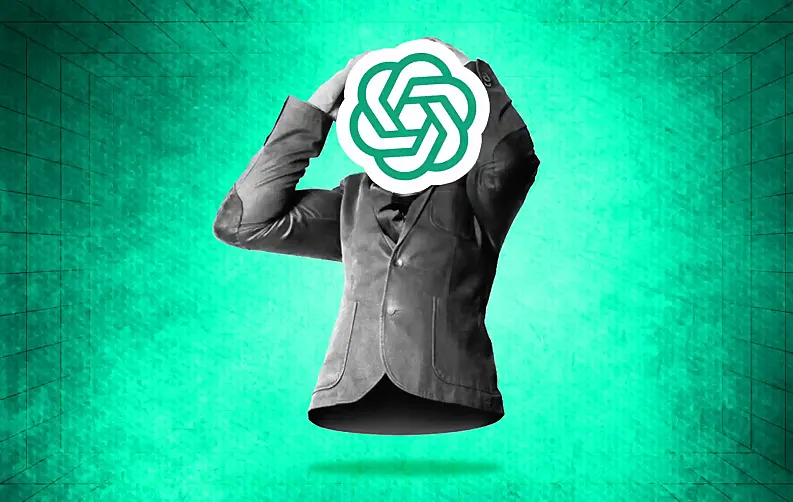
As the landscape of business technology revolutionizes, artificial intelligence continues to be at the forefront of innovation. This technology is known to drive efficiency and create new capabilities and possibilities for businesses. Among the most impactful advancements in AI is the development of ChatGPT. It is an AI-powered chatbot developed by ChatGPT.
The chatbot leverages cutting-edge machine-learning technology to understand and generate human-like texts. This tool is effective in performing a range of tasks, from automating customer services to supporting complex decision-making.
In modern times, as businesses continue to seek operational excellence, understanding the capabilities of ChatGPT becomes crucial. This article will explore everything related to ChatGPT, from its mechanics to its transformative power. Let’s understand how this AI is shaping the future of communication.
What is ChatGPT | An Overview
ChatGPT is an AI chatbot developed by Open AI. This tool is based on the groundbreaking GPT (Generative Pre-Trained Transformer) model. The tool is equipped to assemble words in contextually appropriate sequences to generate a human-like response. The AI bot has been trained on extensive datasets, including a range of books, articles, and websites. This has enabled the tool to study and process language across different styles and topics.
ChatGPT has rapidly become a widely accepted and preferred tool on the internet. As per a Statista report, the mobile version of ChatGPT generated 3.22 million US dollars in revenue globally. With a growing user base, Open AI continuously refines ChatGPT for its users. The tool aims to ensure that the artificial general intelligence (AGI) reaches all. These improvements primarily include developing more robust monitoring tools and implementing use-case restrictions.
The AI-powered chatbot has witnessed multiple developments since its inception. Each iteration of GPT reflects a broader trend towards more powerful, general, and accessible AI technologies.
What does ChatGPT stands for?
Chat: Indicates the model's primary function in generating text-based responses in a conversational format.
Generative: Refers to the model's ability to generate text responses from input data.
Pre-trained: Highlights that the model has been trained on a large corpus of text data before it is fine-tuned or used for specific tasks.
Transformer: Describes the type of neural network architecture used, known for its effectiveness in handling sequential data.
From Input to Interaction: Decoding the Functionality of ChatGPT
If you are wondering how does ChatGPT work, here’s a detailed look at its functioning.
1. Training
ChatGPT is extensively trained to utilize the GPT (Generative Pre-trained Transformer) architecture. It is fed a massive amount of text data sourced from the internet, books, papers, and other documents. The model learns to estimate the probability of a word depending on the words that came before it. This training is unsupervised, with the model detecting patterns and structures in the data itself.
2. Architecture
The transformer architecture employs multiple layers of attention techniques. These techniques allow the model to focus on different input text elements when predicting the next word, making it especially useful for comprehending the context and meaning of words.
The self-attention mechanism enables the model to assess the significance of each word in a phrase, regardless of its positional distance from the word being predicted.
3. Tokenization
Before processing any input, ChatGPT transforms it into tokens using a tokenizer. Each token denotes a word or part of a word. Tokenization reduces computing complexity and enables the model to analyze vast volumes of text efficiently by dividing them down into smaller, more manageable parts.
4. Prediction
ChatGPT creates responses using the trained model and tokenized input by predicting the next word in a sequence based on the preceding words (tokens). It makes these predictions using the probabilities learned during training, ensuring that each word chosen is statistically likely given the preceding text.
5. Output
The model generates text one word at a time until it finishes an idea or reaches a predetermined limit. This technique entails constantly modifying the probabilities for the next word based on the most recent word created, with the goal of creating sentences that are cohesive and contextually relevant to the input.
6. Fine Tuning
ChatGPT can be fine-tuned using customized datasets for specific purposes such as customer service, medical consultation, and legal aid. This fine-tuning approach improves the model's performance in specific domains by making its replies more relevant and accurate based on the specialized data.
Understanding the ChatGPT Timeline
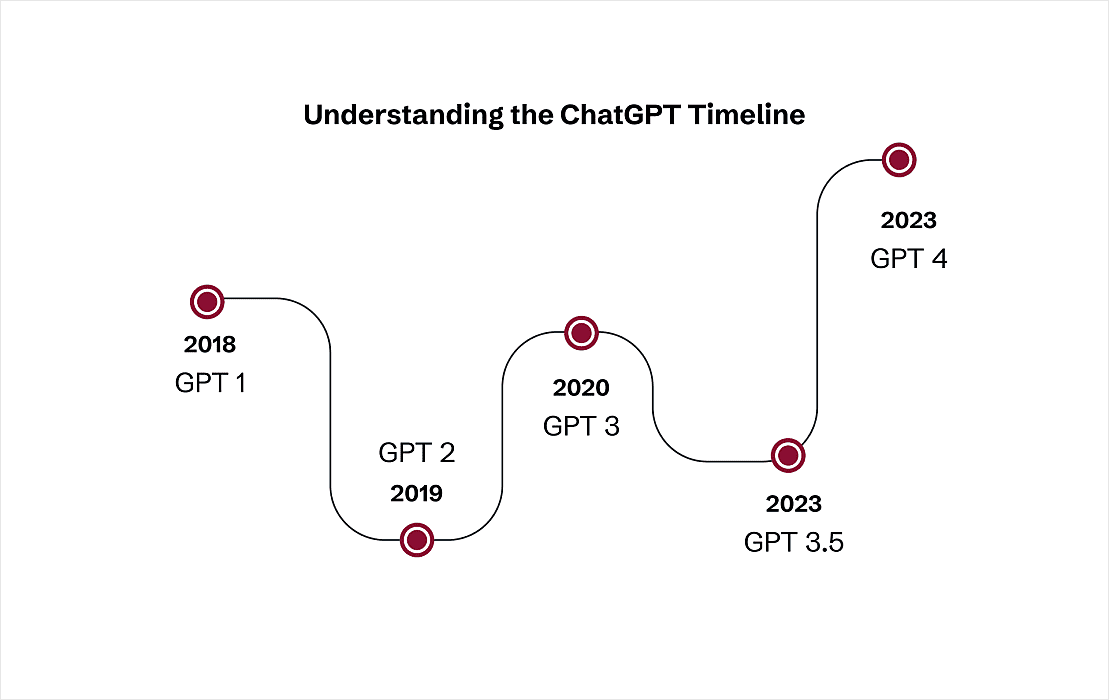
OpenAI has largely contributed to the development of artificial intelligence technologies. However, the release of ChatGPT remains a milestone in the history of Generative AI. Let’s understand the advancements in ChatGPT over the years since its development.
1. GPT- 1
GPT-1 was the earliest model introduced in 2018. It was a transformer-based language model developed by Open AI. It was ranked among the most prominent language models of its time. GPT-1 was trained on large sets of books to perform a variety of tasks. This model is capable of performing tasks, including reading comprehension, improving textual alignments, semantic similarity, and more.
2. GPT-2
GPT-2 was introduced in 2019 as the successor to GPT. It is designed to generate contextually relevant text based on the prompt given by the users. The model had 1.5 billion parameters and was trained with the facts and information on the internet. The WebText enables GPT-2 to have a broad understanding of languages and context across different topics.
OpenAI initially did not launch the full version of GPT-2 because of the potential misuse. However, the full model was eventually released, highlighting the ethical considerations for AI.
3. GPT- 3
GPT-3 has 175 billion parameters and has developed more powerful capabilities than the previous models. It was released in June 2020 and is considered the most advanced version of language models ever created. Similar to GPT-2, this model was trained on a mixture of licensed data, data created by human trainers, and publicly available data.
It can perform a variety of tasks, including translations, question answering, summarization, and generating creative content.
4. GPT- 3.5
ChatGPT-3.5 is a step forward in the natural language processing capabilities of Open AI’s models. It offers a more effective and reliable tool for researchers. It is considered as the more fine-tuned version of GPT-3. It offers improvements in performance, particularly in tasks requiring a deeper understanding of context and detail. This model was trained on the same data as the previous one. However, the model incorporates advanced training techniques to refine its capabilities further.
5. GPT- 4
Open AI introduced GPT-4 in March 2023. It is an advanced iteration of the Generative Pretrained Transformer series, following GPT-3.5. This model is substantially larger than GPT-3. It features around 175 billion parameters like its predecessor. However, there are certain improvements in the training procedures and architecture.
The model is specifically designed to address issues concerning AI safety and ethical concerns. The model can be used in multiple applications across different fields. GPT-4 can be used for creative writing, coding assistance, data analysis, educational training, and more.
6. GPT-5
GPT-5 is the next big advancement in ChatGPT. The model is expected to surpass its predecessors in terms of data and technology.
The Advanced Technology Behind ChatGPT
ChatGPT is a conversational AI model built on the architecture of the Generative Pre-trained Transformer series. The technology behind ChatGPT primarily incorporates the latest advancements in machine learning, deep learning, natural language processing, and more. Let’s have a detailed look at the technology that is powering the benefits of ChatGPT.
1. Transformer Architecture
ChatGPT's core is based on the transformer architecture. The transformer processes and generates text using self-attention mechanisms. This architecture enables the model to consider each word's context in a phrase. It interprets regardless of its place, resulting in more coherent and contextually aware replies.
2. Large-scale Language Modelling
ChatGPT is trained using extensive and varied datasets. This includes books, journals, webpages, and other text sources. This training entails predicting the next word in a sequence based on the prior words. This way, the model acquires language patterns, syntax, and knowledge across a variety of topics.
3. Fine Tuning for Conversational AI
While GPT models can do a variety of language tasks, ChatGPT is specifically tailored to perform better in conversational scenarios. This includes additional dialogue-focused training procedures to improve its ability to understand and provide human-like responses.
4. Reinforcement Learning from Human Feedback
OpenAI implemented Reinforcement Learning from Human Feedback (RLHF) to improve ChatGPT's answers. It improves its response based on human preferences and interactions. Human trainers can give input on the model's outputs. These outputs are subsequently utilized to teach the model the intricacies of more natural and useful conversational behaviors.
5. Scalability and API Access
ChatGPT is accessible via an API, making it scalable and simple to incorporate into a variety of applications and platforms. This accessibility ensures that developers and organizations may benefit from its capabilities. Users do not have to deal with the complexity of hosting and maintaining huge AI models.
Exploring the Core Components and Features of ChatGPT
ChatGPT, as a sophisticated AI-language model, is built on several key components that enhance its ability to interact with users. Here are the primary components of ChatGPT.
1. Understanding and Generating Natural Language
ChatGPT can understand and generate text with a human-like quality. It can construct complete sentences, maintain topic coherence throughout paragraphs, and even produce creative results.
2. Contextual Awareness
One of ChatGPT's noteworthy advantages is its ability to maintain context during a conversation. It can retain previous sections of the conversation and incorporate them into its responses. This improves the interaction's coherence and contextual relevance.
3. Dialogue Management
ChatGPT can manage a discussion flow, handle turn-taking in conversations, and respond correctly to cues without explicit programming. This makes it especially handy for applications such as virtual assistants and customer support chatbots.
4. Language Model Training with Diverse Data Sources
The model is pre-trained on a large volume of content from the internet. This allows it to have a comprehensive comprehension of language and expertise across multiple areas. The comprehensive training enables it to answer questions on a variety of topics.
5. Fine-tuning with Reinforcement Learning from Human Feedback (RLHF)
ChatGPT has been fine-tuned using RLHF. This technique allows human trainers to provide feedback on the model's responses in order to increase its accuracy and relevance. This method improves the model's capacity to deliver acceptable and contextually relevant answers.
6. Multilingual Capabilities
While predominantly trained on English data, ChatGPT can interpret and generate text in a variety of languages, making it suitable for global applications.
7. Customization and Scalability
ChatGPT's design enables modification based on individual tasks or industries. This allows organizations to adjust the model to their needs. Furthermore, its scalable design allows it to withstand increases in demand and complexity without significantly degrading performance.
8. Handling Ambiguity and Nuance
ChatGPT can handle ambiguous questions and provide responses that account for several interpretations. This is critical for producing trustworthy and nuanced responses in complicated interaction scenarios.
9. Safety and Ethical Considerations
OpenAI has implemented measures to make ChatGPT more secure and ethical in its responses. Although not perfect, filters and training tweaks can help limit the risk of producing damaging or biased information.
In which areas ChatGPT creates a transformation in the business world?
Advanced AI tools are extensively used across different industries. The advanced capabilities of ChatGPT can significantly transform various aspects of the business world. Let’s discuss the key areas where ChatGPT has improved business performance and efficiency.
1. Human Resource and Management
ChatGPT can easily automate the recruitment process using its advanced capabilities, illustrating the broader impact of AI on employment. The tool can conduct initial screening interviews, schedule follow-up interviews, and even answer frequently asked questions about the company. Furthermore, ChatGPT simplifies the onboarding process by offering essential resources to the employees.
2. Customer Support and Services
ChatGPT can easily handle large volumes of customer data and inquiries. It can quickly provide accurate responses to all customer queries. The automation of this process can significantly reduce wait times and enhance customer satisfaction. This AI chatbot also ensures that customer support is available around the clock. Offering customer services beyond business hours improves support accessibility as well.
3. Marketing and Sales
ChatGPT can engage with potential customers by offering personalized recommendations, demonstrating the role of AI in marketing. Additionally, the tool can automate the initial sales process. It can streamline and automate lead generation and qualification. This can help in freeing up human resources for other complex tasks.
4. Content Creation
One of the primary benefits of ChatGPT is its ability to create content. It can quickly generate written content for blogs, social media, posts, reports, and other similar content. This can help businesses maintain a consistent online presence without much effort. Furthermore, the chatbot is capable of translating content into different languages. This makes it easier for the businesses to reach a global audience.
5. IT and Technical Support
ChatGPT can easily diagnose technical issues and IT-related problems in the system. This showcases the transformative power of artificial intelligence in IT and technology. The tool can also provide step-by-step guidance to resolve the technical issue. For technical teams, ChatGPT can also automate routine tasks and increase productivity.
6. E-Commerce
AI is increasingly used by e-commerce businesses to improve the overall user experience. ChatGPT can serve as a virtual shopping assistant, assisting customers in finding products. It can make personalized recommendations based on their tastes and address product-related questions. Additionally, ChatGPT can handle order tracking and management responsibilities. This allows customers to receive real-time updates on their purchases.
7. Training and Education
ChatGPT can deliver training modules and interactive learning sessions customized to each user's learning pace and style. This is similar to how AI in education can personalize the learning experience for users. It can effectively organize and retrieve business knowledge or paperwork. This ensures that vital information is available to employees when needed.
8. Legal and Compliance
ChatGPT can help draft legal documents and typical contracts, saving time for legal teams. It can monitor regulatory changes and assist firms in remaining compliant by offering insights into the necessary adjustments to operations and policies.
Understanding Real-life Applications of ChatGPT Models
Many businesses use ChatGPT for a range of applications. Some of the top real-life applications of this tool are discussed below in detail.
1. Drafting Marketing Content
Struggling with crafting unique content for the socials? ChatGPT has got you covered. The tool creates unique taglines, media descriptions, captions, and more for social media platforms. ChatGPT is an ideal tool for generating creative content without much human effort.

2. Writing Code
We are familiar with GPT’s ability to generate content; the tool is also capable of writing codes in any language that you request. It can quickly build code from scratch or fix a given code. The tool is equipped to generate code using Java, CSS, HTML, and others.
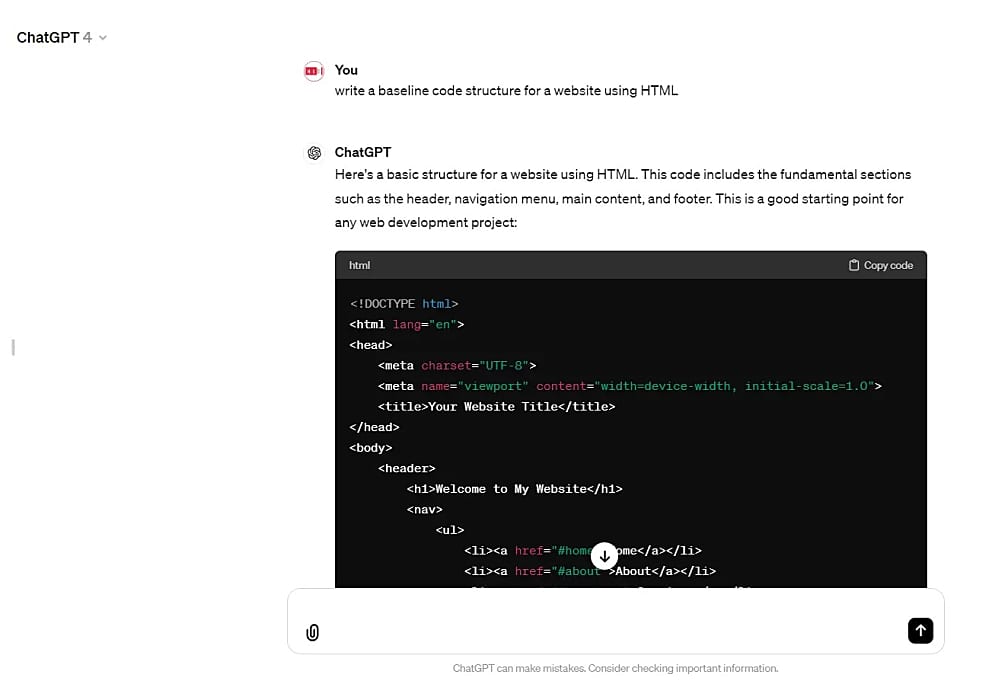
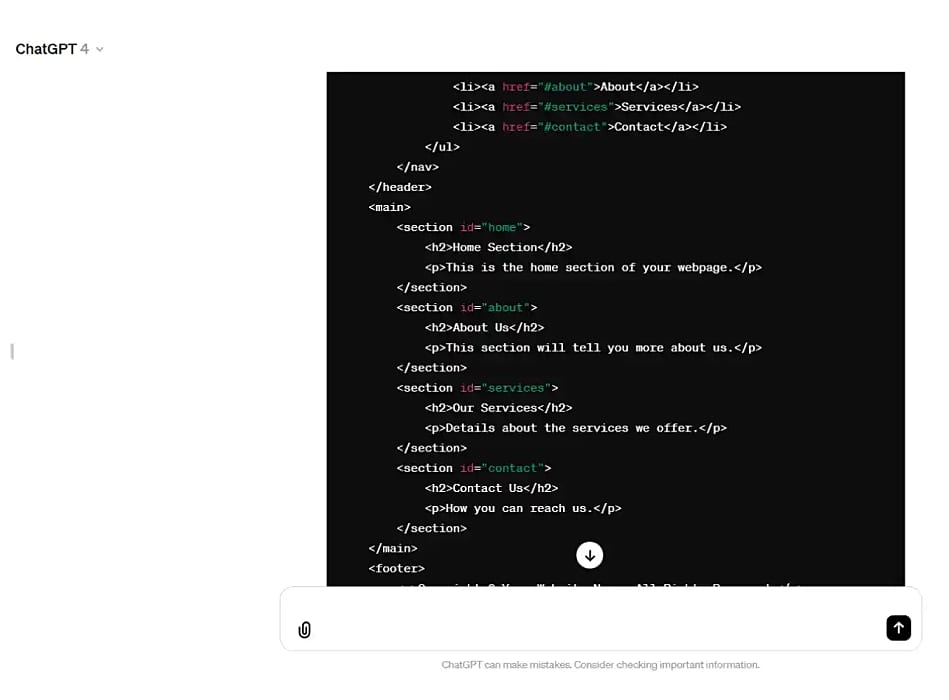
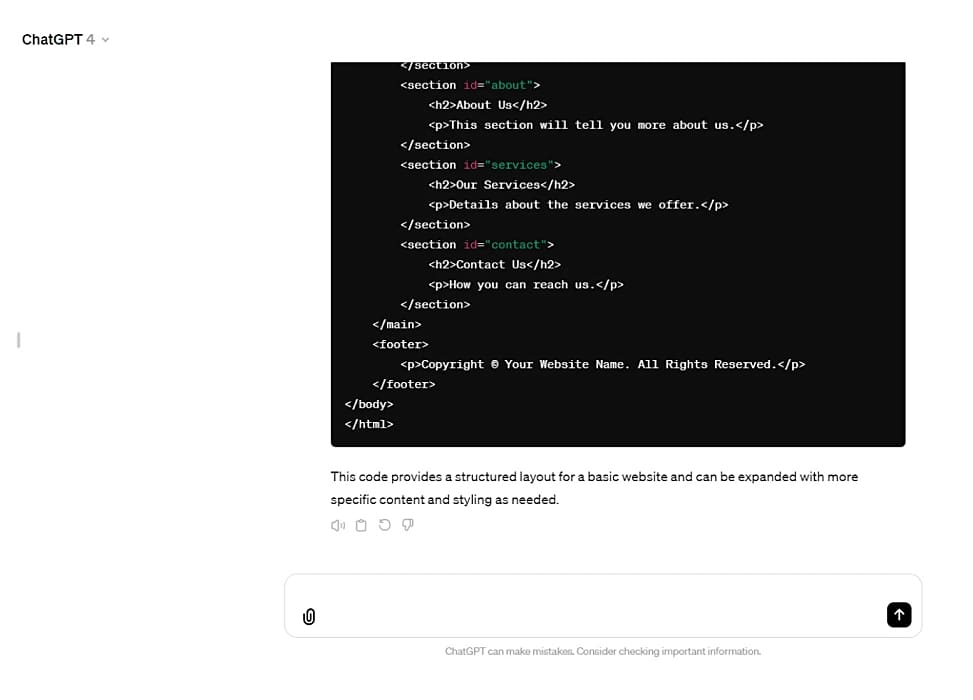
3. Creating and Exploring New Recipes
ChatGPT is not only designed to help professionals at their work, it can also be used by cooking enthusiasts or home chefs. The tool can help you discover new recipes based on your preferences and dietary constraints.
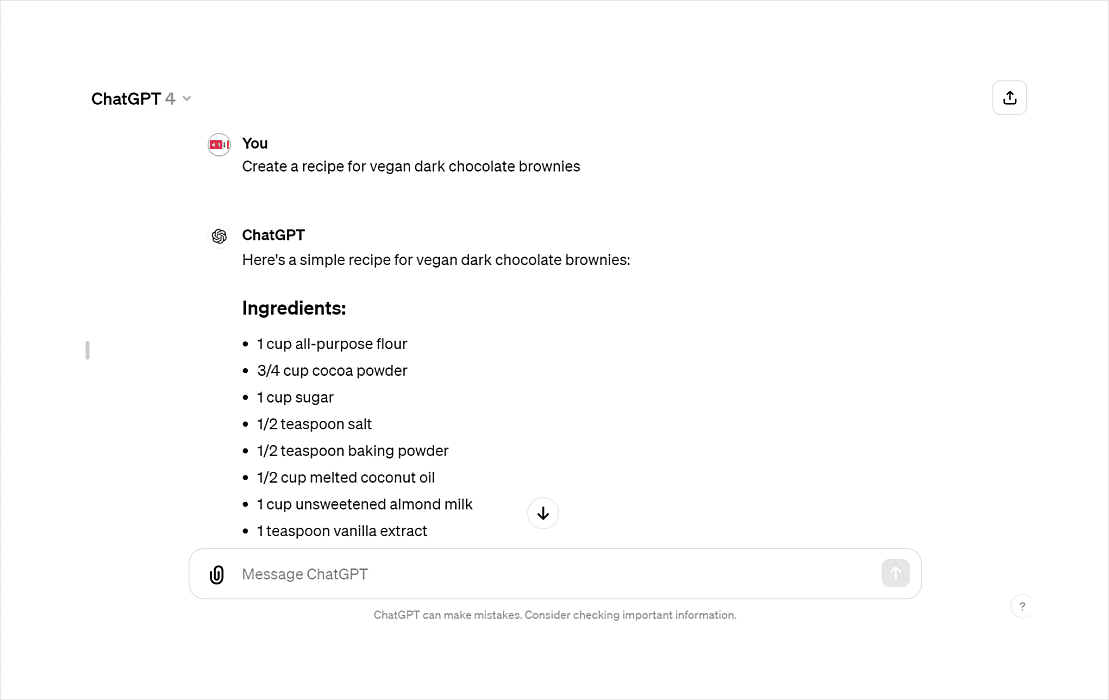
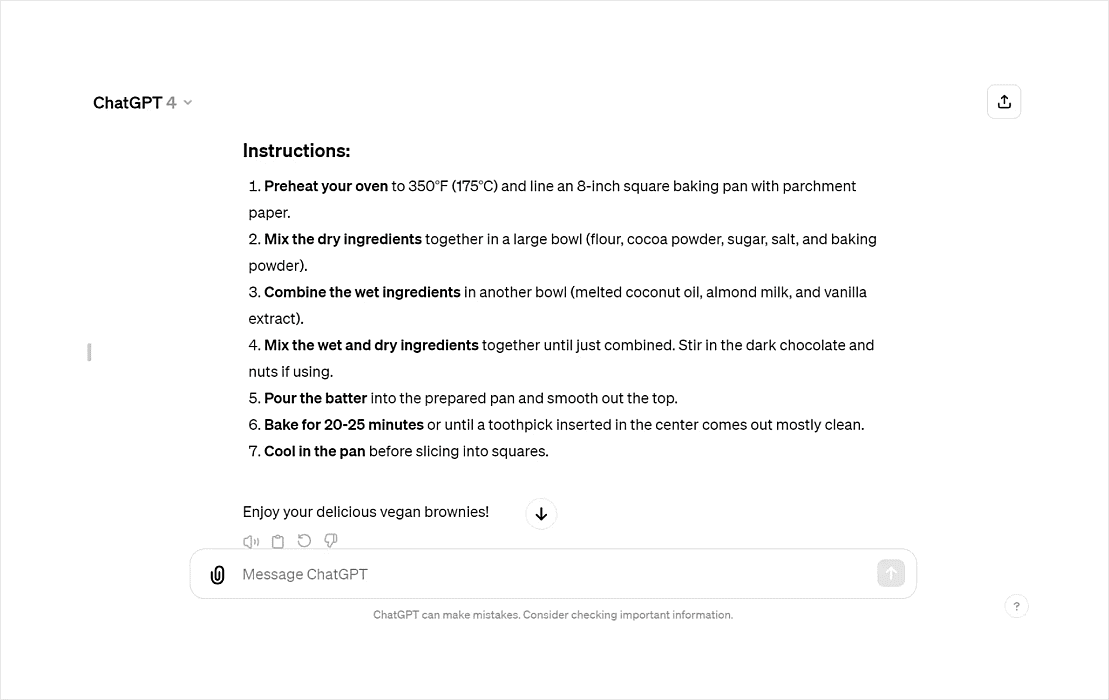
4. Summarizing Stories, Movies, Websites, and More
ChatGPT can help you generate summaries of all your favorite movies, websites, and more. This can help users save a lot of time and effort. You can ask for a short or a long summary as per your preference and convenience.
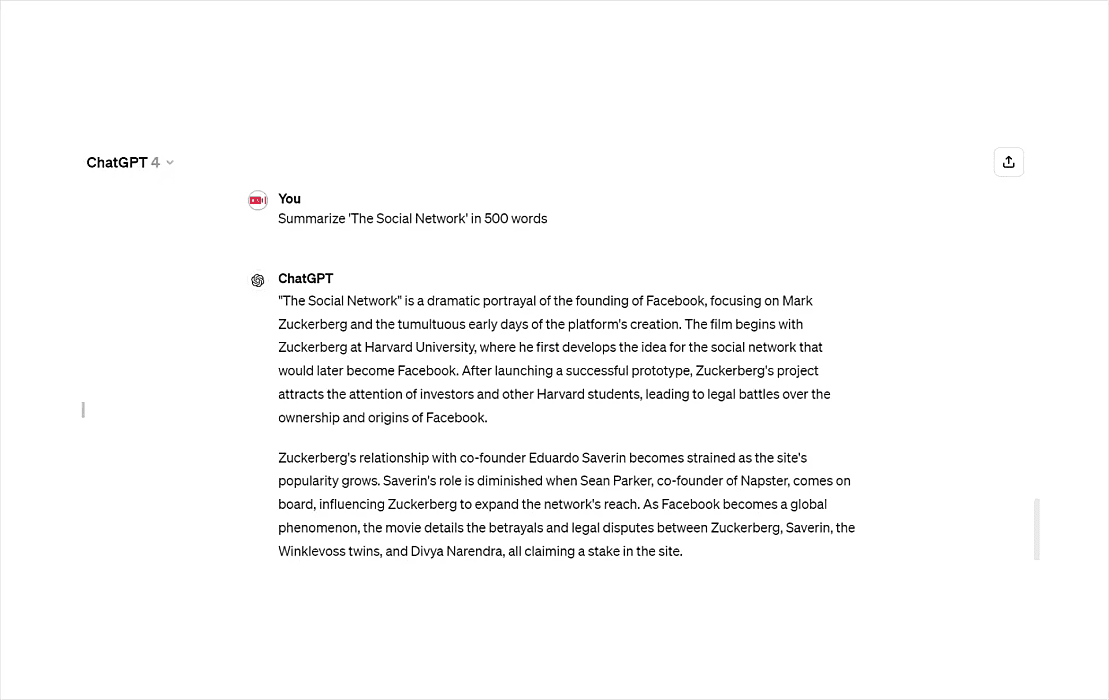
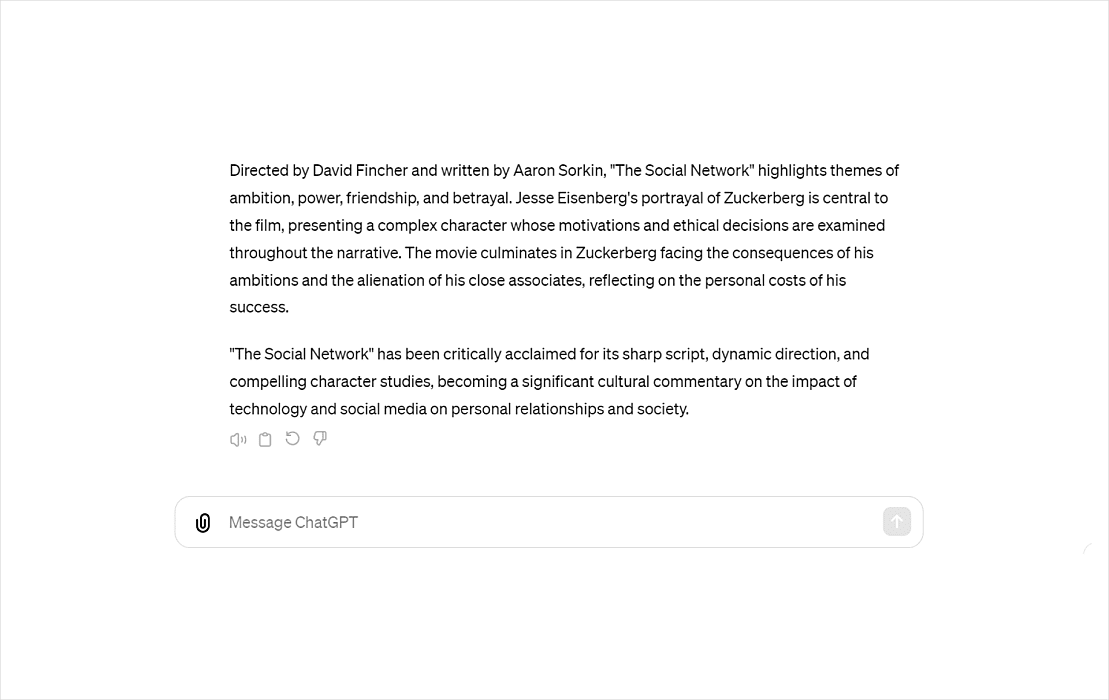
5. Creating Fictional Stories and Characters
Along with helping researchers with updated information, ChatGPT can also be used for creative writing. With its advanced capabilities, the tool can be used to generate fictional stories. These stories can be based on any genre or theme as per the user’s preferences.

6. Translating Content
GPT is an advanced tool that can generate new content or translate the existing ones. The model is trained in multiple languages, and it can thus be translated into any content easily. You can also generate new content in different languages.
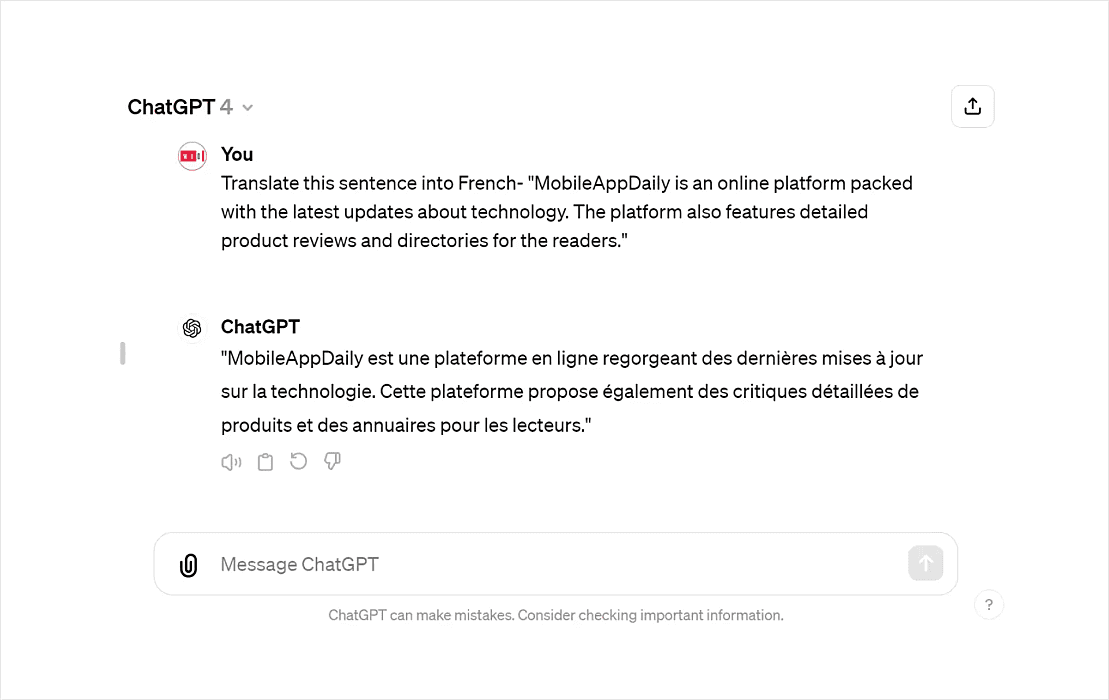
7. Research for Different Topics and Information
ChatGPT is a great tool for general research and sourcing reliable information. You can search any topic related to school, business, or anything else to expand your knowledge. This tool simplifies research by offering all the relevant information in one place.
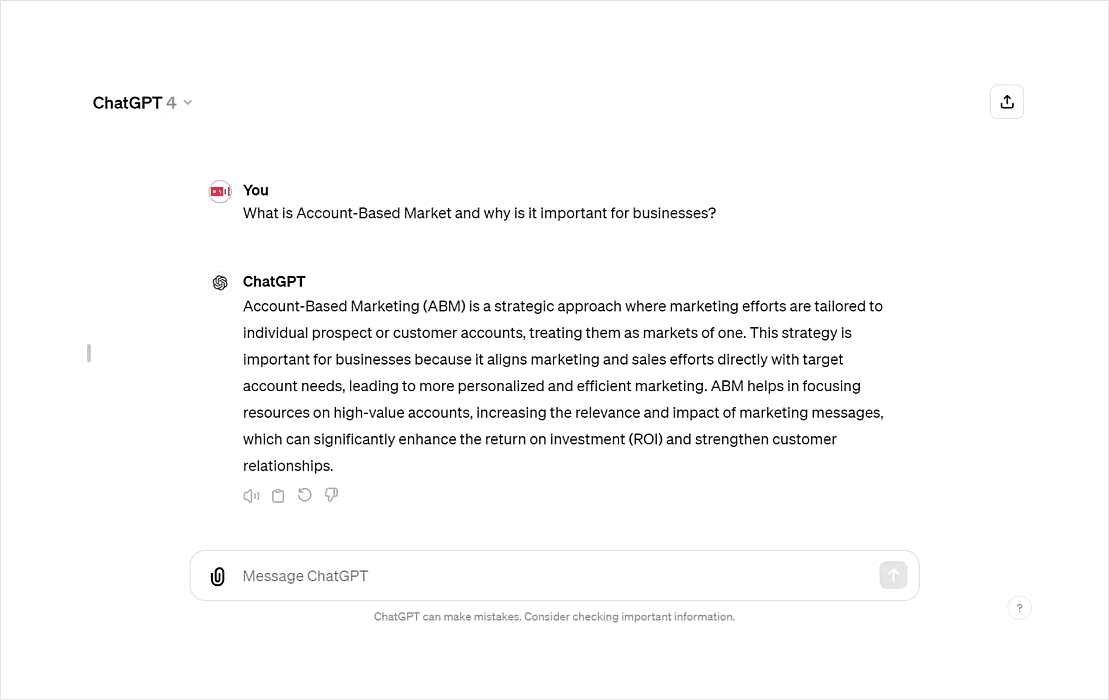
ChatGPT Plugins- What are they and how to use?
Plugins are tools that integrate with the ChatGPT framework to expand the overall functionality of the model. ChatGPT plugins allow easy interaction with external data sources, services, and APIs to provide more detailed information. These plugins allow the model to perform specific tasks like retrieving real-time data, accessing specialized information, and more.
How to use ChatGPT plugins?
1. Installing and Activating the Plugins
Plugins are normally installed and managed via the interface where ChatGPT is hosted. This can be done through a plugin marketplace. Conversely, users can directly connect ChatGPT to the appropriate services using API credentials or other authentication details.
2. Configuration of the Plugins
Once installed, plugins may require configuration to determine how they should interact with ChatGPT. This includes setting parameters, determining the extent of data access, and tailoring interactions to meet user demands or compliance requirements.
3. Interacting with the Plugins
Users communicate with plugins using natural language inputs, exactly as they would with ChatGPT without plugins. When a user's query involves a function that the plugin can help with, ChatGPT will automatically use the plugin to fetch or interact with external data and incorporate it into the chat.
4. Security Considerations
It is critical to examine the security and privacy consequences of employing plugins. Ensure that plugins are obtained from trusted suppliers, and that data handling adheres to applicable data protection legislation.
5. Updating and Managing ChatGPT plugins
Keep plugins up to date to ensure they work with the most recent version of ChatGPT. Plugins can be managed by tracking their performance and receiving user input to make necessary changes.
Why Should You Be Using ChatGPT in 2024?
There are several alternatives to ChatGPT; however it stands out as an efficient tool for business and personal use. This tool is packed with all the advanced capabilities to simplify and automate your daily tasks. Using ChatGPT for business and personal use can be highly beneficial. Here’s how using ChatGPT can help you.
1. Improved Interaction
As ChatGPT continues to evolve, it offers more accurate and contextually relevant responses to queries. It is thus a powerful tool to support user interaction across different platforms.
2. Customization and Personalization
ChatGPT can personalize and tailor its responses based on the user’s choice. It can modify responses to meet the specific needs of users and businesses. This customization can significantly improve customer experience.
3. Automation and Efficiency
It can automate responses and manage several requests at once. This boosts operational efficiency in customer service and other communication-intensive industries.
4. Cost Effective
Using ChatGPT can significantly reduce the expenses associated with resources. It reduces the cost associated with human labor. This is a great alternative to automate routine or repetitive tasks on a budget.
5. Continuous Learning
ChatGPT is a machine learning model thatdevelops over time by learning from interactions and providing more accurate responses and insights.
Navigating Through the Potential Limitations of ChatGPT
ChatGPT is an AI-powered tool with advanced capabilities. The tool offers multiple advantages but comes with its own limitations. Let’s discuss these limitations in detail below.
1. Understanding Context
ChatGPT processes language using patterns and data on which it has been trained. It does not have any true comprehension or awareness of itself. The tool does not completely comprehend complex or profoundly nuanced scenarios that necessitate significant background information on current events that are not included in its training dataset.
2. Bias and Fairness
The model may create responses that reflect biases in the training data. This can include cultural, gender, or ideological biases that were present in the source material. Such biases could influence the fairness of responses, necessitating strict oversight, particularly in sensitive applications.
3. Error Rate
ChatGPT can occasionally give inaccurate replies or produce misleading information. This occurs when responses are generated based on likelihood derived from data patterns rather than factual accuracy or real-world verification. Its performance varies substantially depending on the way the question is phrased and the specificity of the issue.
4. Huge Dependence on Training Data
Since the model's knowledge is fixed at the time of the most recent training update, it cannot generate information about subsequent developments. Given this temporal limitation, it may not be the ideal source for up-to-date information or recent developments.
5. Lack of Emotional Intelligence
Despite the ability to replicate conversational habits and styles, ChatGPT lacks emotional intelligence and empathy. It does not grasp human emotions beyond the textual level. This limits its usefulness in circumstances when interpreting emotional cues is critical.
What are the Ethical Concerns Associated with ChatGPT?
When using ChatGPT, here are a few considerations that you must keep in mind. These ethical practices will help you use the tool more securely and safely.
1. Bias and Misinterpretations
AI systems, such as ChatGPT, can reflect or amplify biases in training data. These systems can thus produce skewed or unfair results. Users must be aware of these limitations and avoid perpetuating prejudices based on AI-generated information. To reduce this issue, information must be cross-verified, and varied perspectives sought.
2. Data Privacy and Security
Ensuring the confidentiality and integrity of data shared with or generated by ChatGPT is critical. Users must be careful not to enter personally identifiable information, sensitive personal details, or proprietary data unless proper precautions are in place. It is also important to understand how providers may store or use data.
3. Dependence and Decision Making
While AI might help with decision-making, over-reliance on automated tools can be harmful, particularly in key fields like healthcare, law, and finance. It is critical to maintain human judgment and control when interpreting and validating AI recommendations, as AI should help rather than replace human decision-makers.
4. Transparency
Users should be open about the use of AI-generated content, particularly in professional or public settings. It is critical to disclose when outputs are AI-generated in order to avoid deceiving people about the nature of the communication or the capabilities of AI systems.
5. Misuse Potential
The ability of AI, such as ChatGPT, to generate persuasive writing can be exploited to provide misleading information, impersonation, or other deceptive actions. Users must be morally accountable, ensuring that the use of Artificial General Intelligence (AGI) does not hurt people or communities.
A Look Into the Future of ChatGPT
With the advancements in AI technology, the possibilities of how we interact with machines are also expanding. From improving customer experience to revolutionizing education, the potential uses of ChatGPT are vast and exciting. The future of ChatGPT looks bright, with the potential for creating more advanced language models.
As the technology grows, users can expect ChatGPT to be more sophisticated and effective in its working. In the future, we can expect this AI tool to generate more relevant responses supported by a better understanding of the context. Another improvement that we can expect in ChatGPT is multi-modal running.
Multi-modal learning refers to the ability to add images and videos to the learning and training process. With this, ChatGPT will be able to produce more nuanced responses that are based on a broader range of information.
ChatGPT is also expected to develop more specialized language models. These models will be specifically tailored to industry-specific uses. For instance, a language model that is trained for legal language will be more accurate than a general-purpose language model.
All-in-all the future of ChatGPT is quite promising. There is a huge potential for developing more sophisticated and advanced language models. In the future, ChatGPT can become even more useful for applications across a range of industries.
Innovate with AI: Develop a ChatGPT-like Application With MobileAppDaily
MobileAppDaily offers valuable resources for businesses that can help them develop an app like ChatGPT. For instance, the platform can connect businesses with chatbot development companies for app development.
All these resources are tailored to the creation and optimization of AI-driven applications. Here’s how MobileAppDaily can be a helpful resource for businesses.
1. Technical Resources and Support
MobileAppDaily offers blogs and updated information related to the latest app development trends in the market. These resources can help businesses develop an optimized app for their end users. The platform also recommends best solutions and practices for app development.
2. Insights into the Marketing Strategies
MobileAppDaily offer educational resources that can help businesses craft effective marketing strategies. These strategies can help businesses promote the app among the users. The best practices can include app store optimization, content marketing, social media campaigns, and more.
3. Networking Opportunities
MobileAppDaily offers a chance for businesses to connect with the best artificial intelligence development companies that can help in the development of apps. These companies can enhance the app development process and improve market reach.
Wrapping Up!
In conclusion, ChatGPT provides a variety of options for improving communication, automating chores, and gathering insights through AI-powered interactions. As we use this technology, we must be conscious of ethical concerns such as data privacy, bias, and transparency.
By addressing these issues and encouraging safe use, we may maximize the benefits of ChatGPT while avoiding potential hazards. Embrace the power of AI with awareness and responsibility to pave the way for new and ethical applications.
Frequently Asked Questions
-
What is ChatGPT used for?
ChatGPT is used for multiple applications across different industries. Some of these applications are listed below for your reference.
- Customer support automation
- Answering questions and providing explanations
- Assisting with coding and technical troubleshooting
- Engaging in the conversation for entertainment or education
- Generating content for blogs, social media, and marketing
-
What is ChatGPT's full form?
-
How much does ChatGPT cost?
-
Is there a ChatGPT app?
-
Is ChatGPT safe?
-
Who created ChatGPT?
-
What is GPT-4?
-
Is ChatGPT available for free?
-
How to use ChatGPT?
















